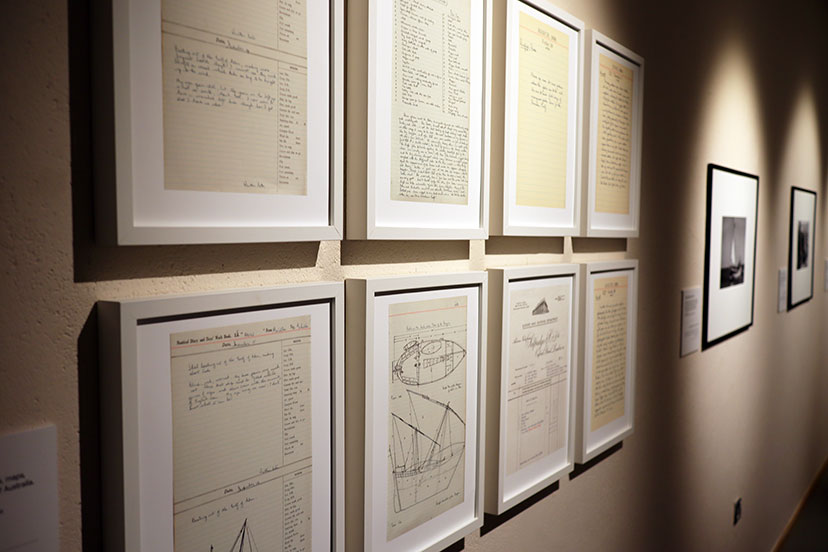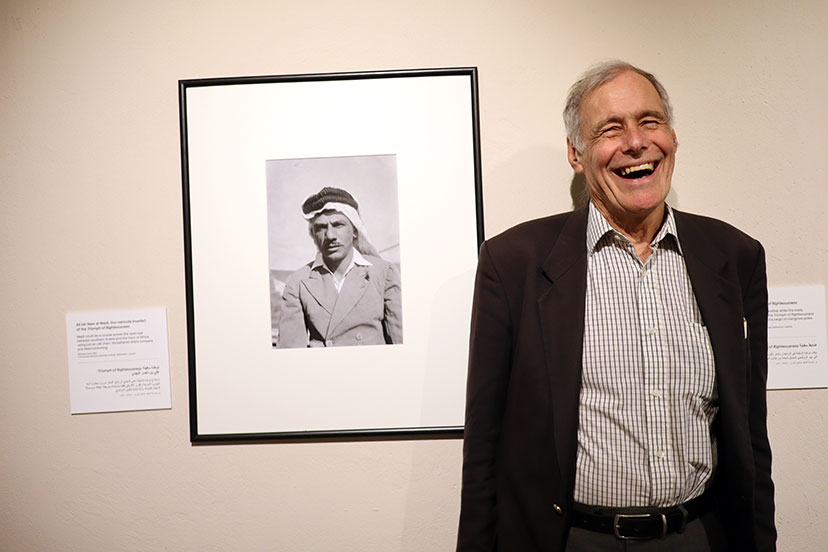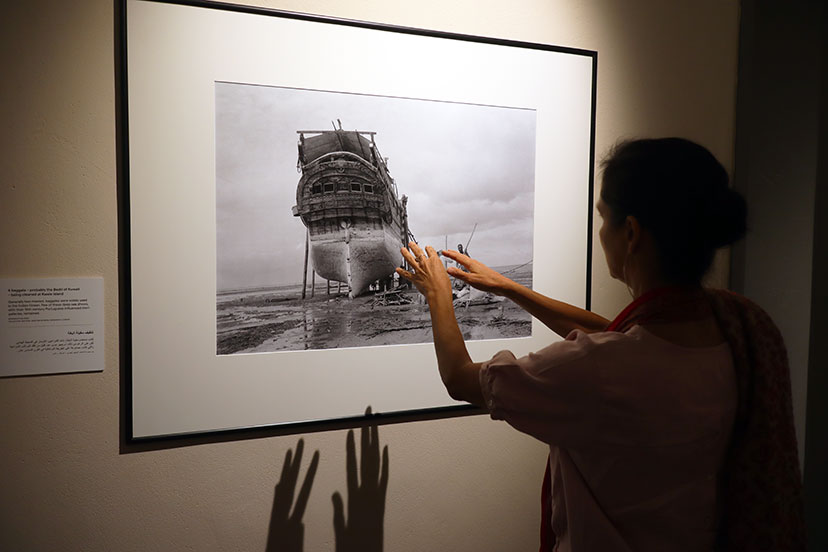Kuwait is moving boldly towards the future, sharply focused on achieving the seven pillars in the vision 2035 initiative. At this time, looking back on the past seems prudent; remembering the foundations of hardy ingenuity that built this country stands Kuwait in good stead. The Australian Embassy, in collaboration with Dar Al-Athar Al-Islamiyyah, presents both still and moving pictures in this exhibition that showcase the seafaring genius of Kuwaitis, and Australian explorer Alan Villiers’ recognition of, and dogged documentation of this.
In the same way that Modest Mussorgsky’s composition Pictures at an Exhibition has become the seminal showpiece for virtuoso pianists, this collection temporarily housed in the Amricani Cultural Centre is evidence of Villiers as the ultimate explorer and adventurer.
There’s no ‘noble savage’ bias here, what shines through in the exhibition is an ingenuous and untainted respect for the people and discoveries he made in Kuwait, where he learned from those whom he encountered. Villiers’ book “Sons of Sinbad” documents the 1938-1939 voyage he shared on the Bayan captained by Kuwait mariner Ali Nasser Al Najdi.
The book is the only work of its kind on Kuwaiti seafaring, set in the last days of the voyaging dhows, six years before the first export of oil out of Kuwait. The careful curation of the exhibition has resulted in a small but comprehensive representation of Villiers’ experiences and is utterly unmissable.

Christopher “Kit” Villiers, Alan’s son, was invited to Kuwait to take part in the many events and celebrations organized by the Australian Embassy and Ambassador Jonathan Gilbert to commemorate Alan Villiers’ Kuwait journey, including the launch of the Amricani exhibition.
Also invited to Kuwait was scholar, author, former resident of Kuwait and former Kuwait Oil Company employee Grace Pundyk who rediscovered Villiers’ photography and journals in the depths of the National Maritime Museum archives in London. Grace was instrumental in organizing the production of coffee table book, Sons of Sinbad: The Photographs in 2006, which was listed in The Times top 5 photography books for that year.
The story of how Grace met Arabian Publishing’s owner William Facey, someone who separately had been considering how to get “Sons of Sinbad” back in print, is a story for another day; but this is the collaboration that pulled together the photographs book.
bazaar got the rare opportunity to talk to Kit and Grace at the same time, and it was fascinating to listen to the discussions between them; a son’s recollection of his father alongside a researcher’s understanding of a subject through her findings. “I hope we don’t disagree!” Kit remarked at the start, with a keen sense of humor.

What is completely unexpected to see is the high-quality film footage that Villiers shot. Remember, in 1938, reel cameras of this kind are the rarified objects of wealthy owners. Kit explains that his father was a popular author, and the income from this funded his travels and the purchasing of equipment. Alan Villiers wrote over forty books in his lifetime, becoming known for his tall ships or square rigger knowledge, and in 1938 the 34 years old already had fifteen nautical themed books under his belt.
Villiers even became a consultant for Hollywood, and advised on maritime productions like 1962’s HMS Defiant, featuring huge movie stars of the day Dirk Bogarde, Alec Guiness and Anthony Quayle, “and myself of course!” laughs Kit, after telling stories of he and his siblings being extras in the movie.
The smiling faces of the Kuwaitis that Alan Villiers captured leave a lasting impression; no-one seems to be looking suspiciously or angrily at the man behind the camera. In fact, the subjects at the end of Villiers’ lens seem to have welcomed interacting with him, in order for Villiers to be able to take such intimate footage.
This is Kuwaiti hospitality as we know it, natural hosts, open and welcoming. That was a great piece of luck, to land here, as it wasn’t necessarily Kuwait that Villiers was aiming for.

“He wanted to document Arab dhow journeys” explains Grace, “Dying trade,” Kit interrupts, and Grace agrees. She goes on to describe how Villiers was introduced through the British to an agent in Yemen who put Alan in touch with the Al Hamad family who eventually put him on Bayan, Najdi’s dhow which from Yemen travelled down the east coast of Africa and then back to Kuwait.
Asked if he ever would have visited Kuwait, had it not been for this exhibition and series of events, Kit honestly admits, “No.” but expresses his delight with the hospitality he’s received and offers profuse thanks. Kit says that what he has come away with from his visit is, “…amazement! To think that a full eighty years after the voyages that it’s come to this terrific explosion of interest,” going on to say he sees how his father’s adventuring, “…in turn has reflected on the Alhambra world, particularly on the Najdi family and Najdi who presumably was just an ordinary dhow captain and now is considered a great hero, and has his own documentary.”
But, it is Alan Villiers’ documentation through his book Sons of Sinbad – An Account of Sailing with the the Arabs in their dhows, in the Red Sea, round the coasts of Arabia, and to Zanzibar and Tanganyika; Pearling in the Persian Gulf; and the life of Shipmasters and the Mariners of Kuwait that this exhibition celebrates. Alan Villiers & the Sons of Sinbad: an Australian in 1930’s Kuwait is a mere snapshot of all the Australian adventurer has to share with the world on his Kuwait experience, and you absolutely must go to see it. bazaar can’t recommend it enough.
The “Alan Villiers & the Sons of Sinbad: an Australian in 1930’s Kuwait” exhibition runs until January 31, 2019 at the Dar al Athar Al Islamiyyah Amricani Cultural Centre, Cultural Center on the Arabian Gulf Road in Kuwait City.
Featured image shows Christopher “Kit” Villiers with Grace Pundyk.








